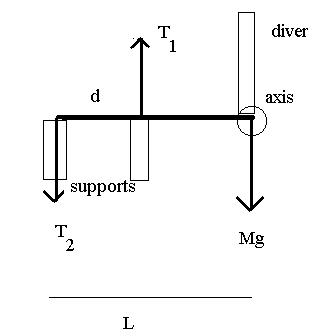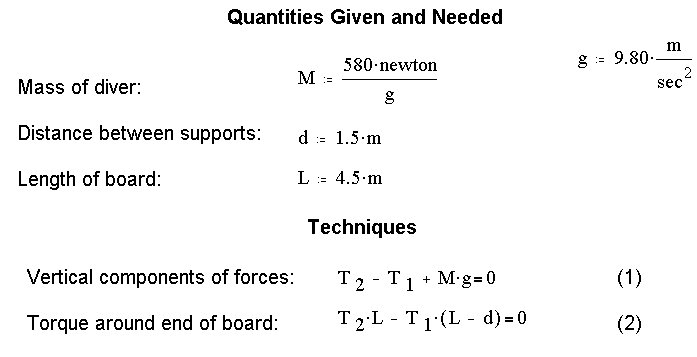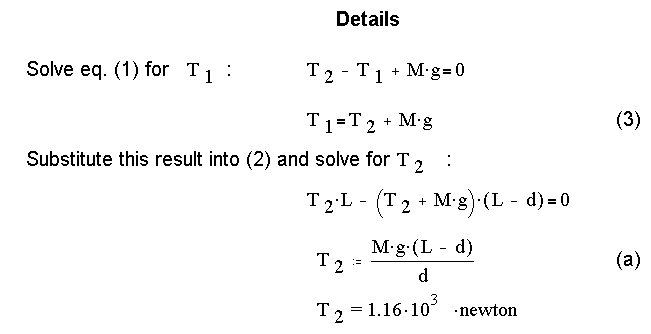



| Last revised 1999/12/02 |
Another equilibrium problem with sums of forces and torques vanishing for all systems and directions. The goal is to choose systems and equations so as to get N1, N2, and N3 as easily as possible. Choose theta to be the angle of the line between the centers of the sphere and the horizontal. A set of equations that works is
| System | Physics | Equation |
|---|---|---|
| Both spheres | Vertical forces | N3 - 2 W = 0 |
| Upper sphere | Vertical forces | N1 sin(theta) - W = 0 |
| Upper sphere | Horizontal forces | N1 cos(theta) - N2 = 0 |
Solving the equations from the first equation downward gives
N3 = 2 W
N1 = W / sin(theta) = sqrt(2) W
N2 = W cot(theta) = W
The tricky part here is that the two sides are not the same length, and we don't know the ratio. Suppose we have a mass mL on the left side at a distance of xL from the pivot, and a mass mR a distance xR from the pivot. If the masses balance, there is no angular acceleration around an axis through the pivot and the net torque must vanish, so we have
mL xL - mR xR = 0
i.e.
mL / mR = xR / xL = R
where R is just a name for the ratio of distances. Then if
mass m is balanced by a mass m1 on the
right,
m / m1 = R
If in addition a mass m2 on the left balances m on the right,
m2 / m = R
Dividing the second of these relations by the first eliminates the unknown R and gives
m1 m2 / m2 = 1
m = sqrt(m1 m2 )